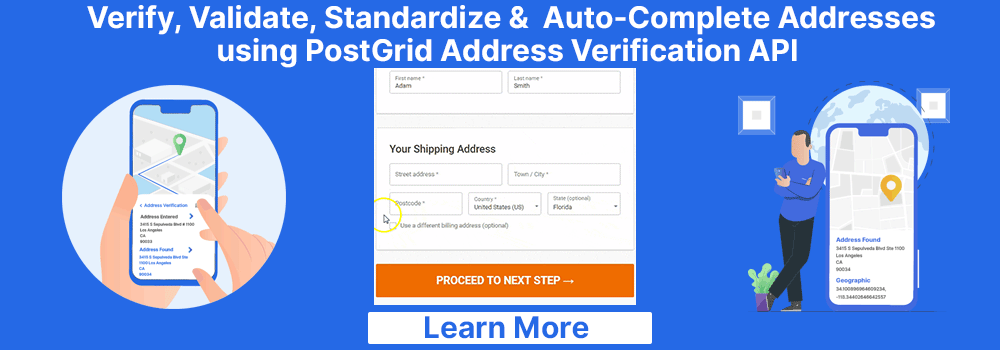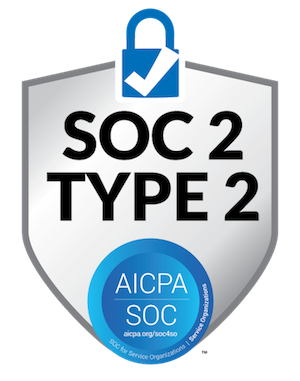
Vietnam Post Address Validation: How Does it Work and What Are Its Alternatives?
“Vietnam Post,” the country’s national postal service, was established in 1951. Starting with traditional mailing services, today, the VN Post has launched its Digital Transformation Center to digitalize its economy and postal operations. The company delivered around 215.3 million mailpieces and 1.2 billion parcels in 2021. Misdeliveries, delays, or lost mail are common when using the vast infrastructure of Vietnam Post.
How does the postal service deliverability avoid these issues? Can businesses validate postal addresses before dispatching mail? Vietnam Post has recently developed a digital system called the Vpostcode to help the public convert addresses into 12-digit alphanumeric codes. It helps validate the entire address against the country’s official database to improve deliverability. But how it works? Does it have a better alternative? This blog is the perfect read to learn about Vietnam Post address validation works, a better alternative, and the Vietnamese address format.

Key Takeaways
- Vietnam Post uses its Vpostcode system to validate postal addresses, improving deliverability and location intelligence.
- Vpostcode uses 12-digit alphanumeric characters to pinpoint addresses on a digital map.
- The Ministry of Information and Communication (MIC) established a national postal code to support its address validation efforts.
- Vietnam Post is updating and enriching its address databases to make the Vpostcode system successful.
- Individuals and businesses can use Vietnam Post’s real-time shipment tracker to monitor the live status.
- Vietnamese rural areas may not have house numbers or street names.
- Some addresses may even have letters, slashes, and even words with numbers.
- Vietnam has shifted from a six-digit to a five-digit postal code system.
- Many rural addresses in Vietnam are still absent in the Vpostcode system.
What is Vietnam Post Address Validation?
It refers to verifying, correcting, and appending Vietnamese address information against the Vietnam Post’s official database. Most businesses use this process to improve their mail deliverability, reduce unnecessary expenses, and optimize logistics, marketing campaigns, and location intelligence.
Vietnam Post has a unique address validation system called the Vpostcode. It uses a set of 12 alphanumeric characters signifying the coordinate location of the address on a digital map. The country’s national postal service plans to bring digital transformation in postal, logistics, and ecommerce operations. The solution is publicly available. However, it is not the best for business use.
How Does Vietnam Post Address Validation Work?
Vpostcode System
The Ministry of Information and Communication (MIC) established a national postal code set to facilitate the display of addresses and the description of objects on digital maps. Vietnam Post developed the Vpostcode postal address code using the Vmap digital map platform. Each code comprises 12 alphanumeric characters assigned to an address. The first five characters are national postal codes, and the following seven represent an address code on a digital map.
It is an open platform, allowing people, businesses, and society organizations to update and enrich address data. Individuals can use the system to create conveniently, archive conveniently, and share addresses. On the other hand, businesses may improve their postal, logistics, and ecommerce operations. Vietnam Post is updating and enriching its address databases to make a Vpostcode successful. The postal service works with numerous technology partners to build data processing solutions and digital map platforms.
Shipment Tracker
Vietnam Post provides a real-time shipment tracking tool on its official website’s home page. Individuals can enter a valid postal number and a confirmation code to monitor the live status. Learning about the shipment’s location and status gives you more control over your mail and packages.
Itinerary Tracker
Businesses can use Vietnam Post’s itinerary tracker tool to get the real-time status of their shipment. The tool allows you to search 100 mail items simultaneously by separating each with commas. However, a correct confirmation code is necessary to fetch the tracking list.
Post Office Locator
Vietnam Post also features a full-fledged Post Office locator on their website. You only need to select province/city and district to fetch a list of Post Office outlets. There’s also a Google Maps integration, making pinpointing their outlets on the map easier.
Freight Estimator
Individuals and businesses often want to calculate the post rates before dispatching mail to a specific location. Vietnam Post’s website has a dedicated freight estimate calculator that provides a fair idea about postage. Enter the origin and destination province, followed by the mail’s weight (grams) and a confirmation code to fetch a rough estimate.
Why Are You Unable to Deliver Mail to a Vietnamese Address?
You Are Using an Incorrect or Incomplete Address
Individuals and businesses might make mistakes while writing a Vietnamese address. There are multiple components in the address line. These addresses often have alley numbers, ward names, and district names. Even a minute mistake might confuse the Vietnam Post employees while attempting to make a delivery. Proper address validation with the Vpostcode system is necessary to avoid delays, failures, or return mail.
The Address is in a Rural Area
The general Vietnamese address format applies to the entire country, but it doesn’t mean you will find all houses using the same pattern. There’s a vast difference between urban and rural addresses in Vietnam. Rural areas in the country may not have house numbers or street names, complicating the address-writing process. The postal workers also need more time to deliver to these locations.
Invalid Postal Code
The country has switched from a six-digit postal code system to a five-digit code. This transition marked a critical step in improving the efficiency of Vietnam Post’s services. However, users often confuse the two systems and write an invalid postal code in their mail or packages. As a result, postal workers cannot quickly rectify these mistakes and reroute deliveries.
Inconsistencies With Slashes or Letters in the Address Format
Vietnamese addresses do not always have a whole number. You might face letters, slashes, and even words with numbers. A slash shows the address is present in an alley. Consecutive houses might share the same number with a letter (A, B, C, D, F) following it. Users need considerable work to update such addresses. These deficiencies may lead to delivery failure or delays, compromising customer satisfaction.
The Recipient was Absent or Moved to a New Address
It could be the most unfortunate event when sending mail or packages. Vietnam Post maintains an address database but doesn’t update it regularly. The lack of a change of address in the Vpostcode system can make your mail deliverable. Their postal workers might attempt to deliver to the old address where the recipient can’t be found. However, there’s a chance that your recipient is absent at the address during the delivery attempt.
Addressing Tips for Sending Mail or Packages to Vietnam
- Abbreviations: Vietnam Post uses multiple abbreviations for Vietnamese address elements, including “Hộp thư” for Post Office Box, “Đường” for street, and “No.” for number.
- Language: Vietnamese is the official language of Vietnam. Writing addresses in Vietnamese domestic mail is standard, but English is acceptable for international mail.
- Alignment: All Vietnamese addresses are left-aligned to support easy comprehension and postal processing.
- Rural vs. Urban Addressing: Vietnamese cities have properly structured formats, while rural areas may not have numbers or street names. Addresses in rural areas often rely on landmarks for reference.
- Postal Codes: Initially, Vietnam had a six-digit postal code system, which was switched to five digits in 2018 to simplify addressing. The first two digits represent the province or municipality, the third and fourth highlight the district, and the last digit specifies the sub-district or commune.
Vietnam Address Format
Vietnamese addresses are simple to write, with only four lines. Begin by writing the recipient’s full name with the appropriate title. The following line mentions the building number and street name; separate them using a comma. Next, provide the ward or district and the five-digit postal code on the same line.
Vietnamese authorities divide its provinces into second-level administrative units, such as provinces, towns, districts, or wards. In the last line, use QAT, a shortened version of Vietnam, for international mail. You need to mention the apartment number, floor, block number, and building name for apartment buildings.
Vietnamese street names are often based on historical figures, events, dates, etc. It means cities, districts, and provinces might have duplicate street names. You should pay more attention to the ward and districts to distinguish between the two locations.
Why Are There Odd and Even Numbers in the Address?
Vietnamese addresses often have odd and even numbers to help spot which side of the street the location is on. If you stand in the street, one side will only have odd-numbered houses, while the other will have houses with even numbers. However, you need to stand on the corresponding side of the street to locate an address.
Here is what the format should look like:
| Recipient Name
Building number and street name Ward and Postal Code Country Name |
Your sample address would look like this:
| Techcombank Head Office 191 Ba Trieu Street Ward Le Dai Hanh, Hai Ba Trung District, 110000 Vietnam |
Real-World Examples of Using the VPostcode System
Customer Analysis
Knowing where your customers are helps plan your business and deliveries. Studying customer locations shows where to open new stores or service hubs. You can use the Vpostcode system to map customer addresses and see clusters. You can also find out how far customers are willing to travel to visit a store.
It helps you check how many homes or businesses are near a potential store. Then, you can market directly to them. Address data makes your customer analysis stronger and more useful.
Infrastructure Planning and Government Agencies
When a planning application is sent to a council, local residents must be notified about the planned development. Developers can check delivery points in the area before submitting applications. This helps them understand the local area better.
Vpostcode Address data can show how many homes and businesses are in the area. It can also help send surveys or marketing materials before applications are submitted.
Reducing Fraudulent Transactions
In fraud prevention, companies check different risk signals to decide if a customer or transaction is safe. They often use an Address Verification System (AVS) for credit and debit card payments. This is common in Card-Not-Present (CNP) transactions.
AVS checks if the billing address or postal code in the order matches the card issuer’s records. If there is a partial or no match, merchants may automatically decline the transaction or ask for extra verification.
How to Send Mail or Packages to Vietnam Using the Correct Address Format?
- Find the Correct Address Format: Vietnamese addresses can be confusing. Include house numbers, alley names, ward or district, and the postal code. Clear, correct addresses reduce lost or delayed mail.
- Add the Recipient’s Phone Number: Vietnamese postal workers often call before delivery. A phone number helps if the mailbox is full or directions are unclear.
- Use Both English and Vietnamese: Some carriers have trouble with Vietnamese accents. Include an English version of the name or address if needed. Always keep the correct Vietnamese format.
- Prefer a Reliable Postal Carrier: Vietnam Post handles standard deliveries. For urgent or valuable packages, use DHL, FedEx, or EMS. For important documents, choose registered or express shipping for extra security.
Expert Tips to Understand Vietnam’s Address System
- Write Vietnamese addresses like this: House number → Street → Ward/Commune → District → City/Province.
- Check alley numbers on maps. Streets can have many small alleys with different numbers.
- If you’re not sure about an address, ask a local. Most Vietnamese people are friendly and happy to help.
Vietnam Post Address Validation Limitations
Limited Adoption in the Region
The Vpostcode system is relatively new in Vietnam. It still needs to cover a large number of addresses, especially in the country’s rural areas. The global COVID-19 pandemic was a massive roadblock to the project’s digitization. The system may not be the most accurate in covering every regional address. Businesses looking for the best deliverability or location intelligence should look for better third-party alternatives using multiple credible data sources.
Limited Accuracy
Vietnam Post’s Vpostcode system provides geocoded addresses you can pinpoint on a digital map. However, the system’s slow periodic updates might cause challenges. It also won’t give Vietnamese addresses the best accuracy and coverage, so you can’t trust the solution 100% to send shipments, run marketing campaigns, or perform business intelligence.
No Integrations With Third-Party Systems
Vietnam Post has not provided valuable APIs for businesses to set custom workflows. Businesses with CRM systems and logistics software need custom solutions to integrate Vpostcode, which reduces efficiency and speed. These integration challenges are unwelcome when you have critical tasks to handle.
Lack of Premise Level Data
Vietnamese addresses are already quite complex for a layman to understand. Businesses expecting secondary address data are out of luck with the Vpostcode system. It doesn’t provide unit indicators like “floor,” “unit,” “building,” etc. These additional details are necessary when you desire the best deliverability for sensitive mail or packages. Sadly, Vietnam Post won’t help you enrich the address data for superior location intelligence.
Dependency on the Vietnam Post
Vietnam Post and the Ministry of Information and Communication (MIC) control the Vpostcode system and its coverage. Being a public entity, the development and updates depend entirely on the country’s current government. Businesses expecting faster address updates and tech support don’t get the best performance or service.
Vietnam Post vs PostGrid Address Validation: Which is Suitable for Your Business?
As you’ve read, Vietnam Post’s Vpostcode is a remarkable step towards digital transformation, but is still in its infancy. The system might be helpful for the general public, government organizations, and businesses, but it still lacks complete coverage of the country. Businesses can’t handle high-volume address data without native integrations for their third-party tools.
All these factors may negatively impact mail deliverability, customer satisfaction, and a company’s resource management. PostGrid’s Address Validation API is a complete solution for businesses of any scale to validate, standardize, geocode, and cleanse address data accurately.
PostGrid relies on multiple credible sources instead of only the Vietnam Post’s official address database. It offers native integrations for your website, mobile application, CRM system, and more to provide real-time validation and define custom workflows. PostGrid is a better alternative to the Vpostcode system, offering greater flexibility, scalability, and accuracy.
| Criteria | Vietnam Post | PostGrid |
| Real-Time Validation | The Vpostcode system does provide address validation, but has limited coverage of the country. | PostGrid gives you real-time address validation against multiple credible data sources for accuracy. |
| Scalability | Users can’t run bulk validation on high-volume address data using the Vpostcode system. | PostGrid enables you to validate 250,000 addresses simultaneously by uploading CSV or XLS files. |
| Address Autocomplete | The Vpostcode system relies on alphanumeric codes instead of standard Vietnamese address elements for validation. | Our solution can generate up to 100 results for each input, reducing keystrokes and saving time. |
| Integrations | There are limited integrations available with Vietnam Post’s address validation solution. | You get multiple integrations for third-party tools, including CRMs, ERPs, ecommerce platforms, etc. |
| Premise Level Data | Vietnam Post’s Vpostocde system doesn’t provide secondary address data to enrich your addresses. | PostGive gives you premise-level data with unit indicators to improve existing addresses with “floor,” “unit,” “building,” etc. |
| Coverage | The Vpostcode system’s coverage is limited to Vietnamese addresses only. | PostGrid’s address validation solution covers over 245 countries and territories. |
| Transliteration | You cannot transcribe postal addresses in Vietnamese from English using the Vpostcode system. | PostGrid supports transliteration to native characters, improving deliverability and consistency. |
Talk to our sales team to learn how we can validate and standardize high-volume international addresses in real-time with the highest accuracy.




 Also Read:
Also Read: 





